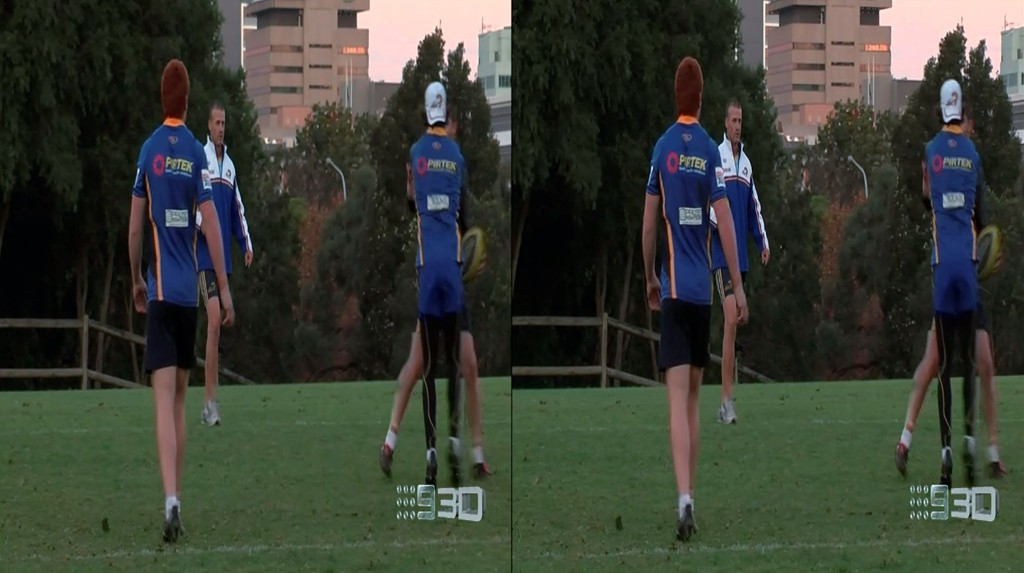ATSC 2.0 ‘Could Include' 3D Transmission
WASHINGTON: TV is 3D. It’s on-demand. It’s pay-walled, personalized, it’s interactive and it defies traditional audience measurement systems. Over-the-air TV still delivers programs on a linear timeline, and the current technology configuration used to deliver it all but prevents broadcasts in 3D. It needs an update, a two-point-oh. The Advanced Television Systems Committee has been working on a 2.0 for a while now. It's being discussed at the group's annual meeting in Washington today.

“The first report of next-generation technologies and issues will be presented during today’s meeting, a foundation to establish a strategic direction for the future,” said ATSC president, Mark Richer.
ATSC 2.0 will be built on the current digital television transmission standard, which is based on MPEG-2 video compression. MPEG-2 was adopted for DTV in 1994. Video codecs have evolved and become more efficient in the meantime. MPEG-2 provides adequate compression for high-definition television in 6 MHz broadcast channel, which was the original goal of the DTV standard.
Now, newer sought-after features--3D for example--demand advanced compression such as MPEG-4 Part 10. However, the 100 million or so TV sets in homes around the country decode only MPEG-2. Broadcast engineers meeting with federal regulators last year concluded it would take at least 13 years to adopt MPEG-4 Part 10 for over-the-air television.
Demonstrations planned for today’s ATSC event are said to “showcase different technical strategies for transmission and reception of 3DTV, with methods that are compatible with the current broadcast system.”
Broadcasters haven’t been gung-ho about 3D, even though Fox was first out of the gate with it in late 2008, transmitting a 3D simulcast of a pro football game to select theaters. (Note: The NFL, 3ality Digital and RealD did this telecast. Fox did their 3D BCS Championship game the following January. Thank you, Ken Kerschbaumer.) In addition, market mavens predict 3DTV sets will be everywhere in a few years. DisplaySearch just predicted there would be 100 million in the market by 2014, though only 2 million sold worldwide in the final quarter of 2010. Part of the reason forecasters are aggressive on 3DTV sales is that it’s not complicated for set manufacturers to add stereoscopic display capability. Whether people will use it en mass is another story. Market research also indicates that fewer shutter glasses have sold than 3DTV sets. The glasses are necessary to see the stereoscopic effect on current 3DTV displays.
The jury is still out on public consumption of 3D video content. Rich Geenfield of BTIG wrote this week that just half of moviegoers who attended the film “Thor” on opening weekend elected to see it in 3D.
“We found this figure to be very disappointing, as 3D screen count is no longer constrained, with ‘Thor’ benefiting from the widest 3D theater count in history--2,737 sites equating to 69 percent of total theaters playing ‘Thor.’”
The ATSC said that work on the next DTV standard “continues and could include:”
- - Advanced video codecs (such as MPEG-4)
- - Non-real-time and file-based delivery
- - Conditional access
- - Digital rights management
- - Advanced electronic service guides
- - Audience measurement tools
- - Personalization/targeted advertising
- - Interactivity and Internet connectivity
- - 3DTV transmission
The group will today be addressed by Sen. Gordon Smith, president and CEO of the National Association of Broadcasters, former FCC chairman Richard Wiley and Dr. Keiichi Kubota, director general of Japan’s NHK Science and Technology Research Laboratories.
~ Deborah D. McAdams, Television Broadcast
The professional video industry's #1 source for news, trends and product and tech information. Sign up below.
